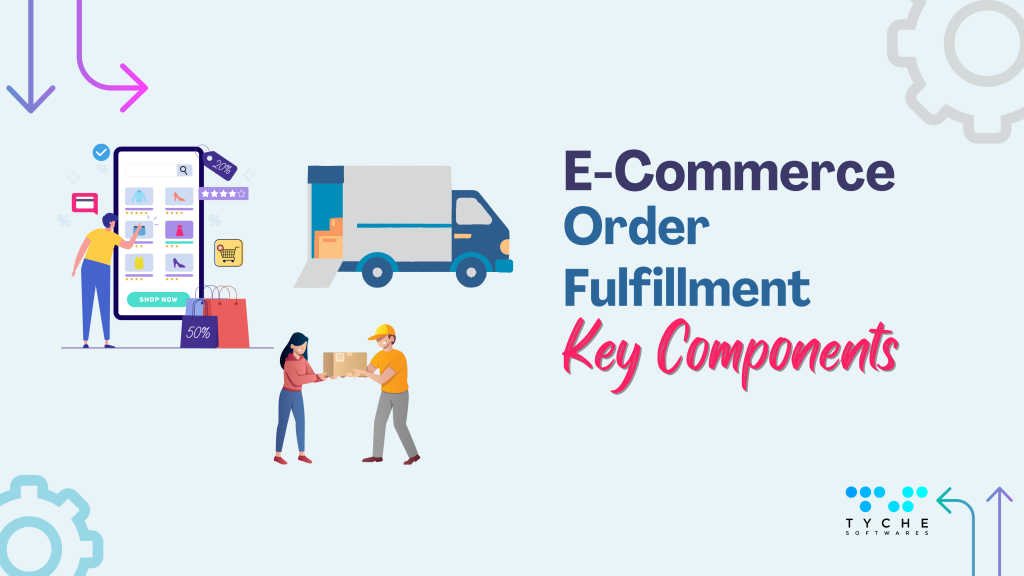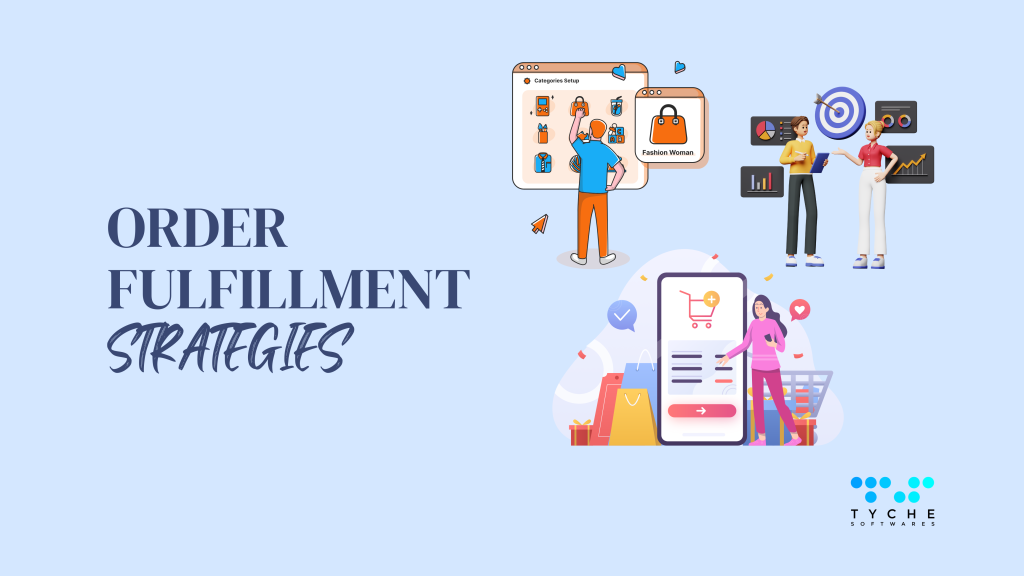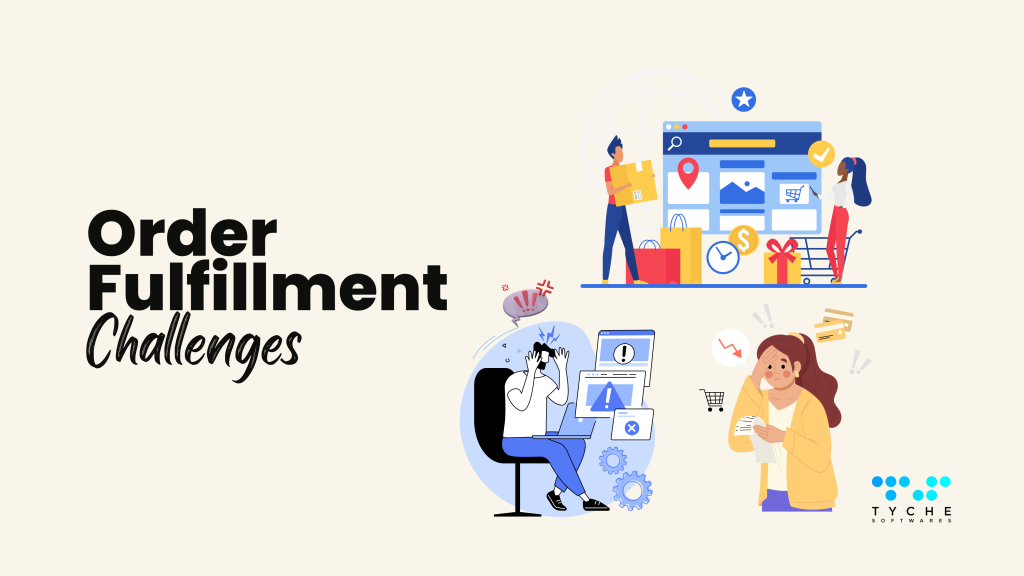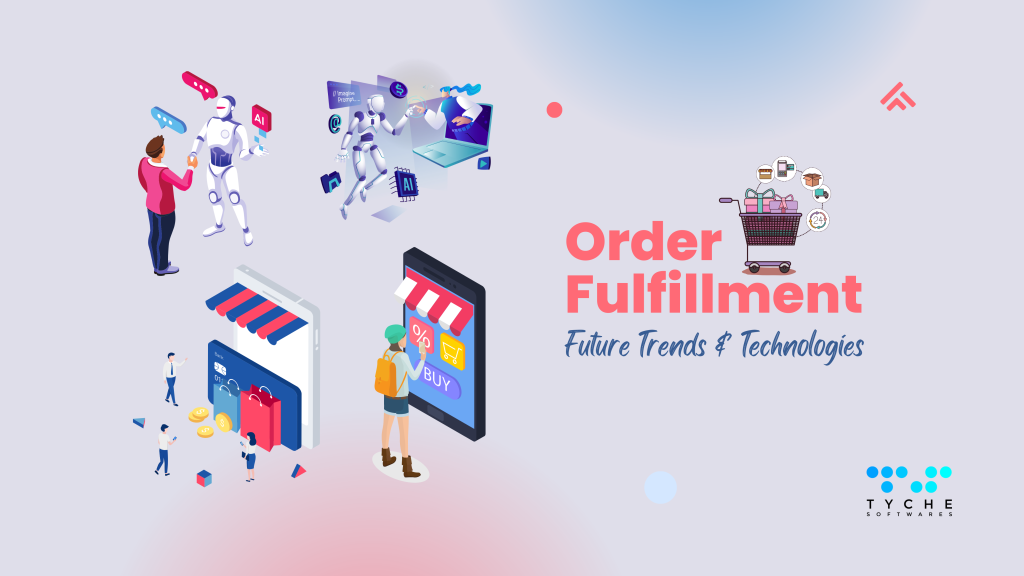Order fulfillment is the backbone of any successful e-commerce operation. It encompasses the entire process from the moment an order is placed to the moment it reaches the customer’s doorstep, ensuring a seamless experience that can make or break a business.
Imagine a customer orders a product from an online store and eagerly awaits its arrival. However, a delayed delivery or an incorrect item can lead to frustration and tarnish that brand’s reputation. On the other hand, efficient order fulfillment, like that of Amazon’s renowned Prime service, can delight customers and foster loyalty. This makes the statistics below even more legitimate.
‘38% of online shoppers will abandon their order if the delivery will take longer than a week’
As a business owner, you must recognize that efficient order fulfillment is crucial to your success. Whether online or offline, timely delivery is vital to meet your customer expectations and drive satisfaction. Swift and accurate fulfillment enhances your customer loyalty, fosters a positive brand image, reduces costs, and positions businesses ahead of competitors in the market.
In this post, we’ll delve into understanding the significance of streamlined order fulfillment in e-commerce, its key challenges, components, and processes. In addition, we will also explore top strategies for achieving operational excellence in your e-commerce business.
So, let’s dive right in with the very basics.
What is eCommerce Order Fulfillment?
Order fulfillment refers to the complete process of receiving, processing, picking, packing, and shipping orders to customers. It involves managing inventory, ensuring accurate product selection, packaging items securely, and delivering them promptly to meet customer expectations. The goal of order fulfillment is to efficiently and accurately fulfill customer orders while maintaining quality standards and timely delivery.
Order Fulfillment Process in eCommerce
As a crucial step in the e-commerce business, order fulfillment involves all the steps required to ensure quality, accurate processing, packaging, and delivery of customer orders. This complete process plays a significant role in ensuring your customer loyalty and satisfaction, and here are the steps of the process explained below:
Order Receipt, Confirmation, and Processing
The journey of every product starts when a fresh e-commerce order hits the system. This is known as the very first step, where customers place their orders online through the e-commerce platform. It is important to have a user-friendly and secure website to streamline this process for your customers.
For instance, take Woo, an e-commerce platform that deals efficiently with this first step. Once an order is placed, it immediately triggers an email confirmation notification to both the customer and store owner containing pertinent information such as order ID, purchased items, value of purchase, and customer data.
This instant alert ensures swift initiation of the process, marking the beginning of backend actions to fulfill that order.
Inventory Management
Proactive inventory management is pivotal to maintaining smooth operations in your eCommerce business. Your e-commerce brand must have an efficient inventory management system to keep track of product availability in real-time. This ensures that your customers are only able to order products that are actually in stock.
Among industry giants in this context, there’s no surpassing Amazon, with its advanced warehouse network and robust systems ensuring real-time stock levels are precise at all times.
Such absolute accuracy helps avert dire circumstances like overselling or underselling, situations that could potentially smear a promising commercial reputation.
Order Picking and Packing
Upon confirmation of available inventory for future dealings, the next step is locating these specific items within your warehouse (order picking), followed by preparing them for shipment/delivery (packing). Accuracy is very crucial for you here to avoid any mistakes or mix-ups.
Shopify, another industry titan, provides several lucrative options for businesses handling their fulfillment operations.
Features, including an efficient tagging system, assure easy identification of exact product locations within voluminous warehouses, while their integrated packing suggestions offer guidance on selecting appropriate packaging according to varying product types.

Planning to add a LOCAL PICKUP option or let the user choose their delivery date on your WooCommerce store?
Meet Order Delivery Date pro that lets you set delivery date and time based on product category, shipping methods, pickup methods etc.
Let your customer choose a convenient delivery date and time set by you so that you can handle order fulfillment without any worries. It’s a win-win for both.
Shipping, Tracking, and Delivery
The ultimate stage involves delivering the ordered products right to your customer’s doorstep and at the perfect time. This commitment hugely impacts how your business will be perceived regarding customer satisfaction.
Most popular e-commerce sites provide customers with a tracking number, and some via shipping plugins that allow them to monitor the progress of their package during transit. This transparency helps manage customer expectations and reduces inquiries about delivery status.
An effective example here is Amazon; in their bid to ensure unmatched customer service, they almost revolutionized the e-commerce sector by providing tracking numbers and their promise of expedited deliveries in one or two days, while Amazon Prime customers can enjoy even faster shipping.
| Recommended Reading: Stay Ahead: Important Holiday Shipping Deadlines for 2023 |
Returns Management
Despite exercising perfection at each stage above, sometimes returns become inevitable due to reasons beyond your control; could range from defective products to wrong shipments, even a change of heart from buyers. In such scenarios, where customers need to return or exchange a product, an effective returns management process stays in place. This ensures a smooth and hassle-free experience for customers seeking assistance.
A noteworthy system here is eBay’s hassle-free returns policy; they stand apart by prioritizing customer experience in their return policies where, with a few effortless clicks, a buyer can initiate returns.
As you can imagine, an efficient order fulfillment process is vital for every e-commerce business as it directly impacts customer loyalty and positive brand reputation. By optimizing each stage of the process above, e-commerce businesses can enhance the overall customer experience and foster long-term relationships with their customers.
Key Components of eCommerce Order Fulfillment

As it is pretty visible, e-commerce has dramatically changed the world of business, introducing unrivaled convenience and speed in buying, selling, and delivering goods globally. Therefore, for any e-commerce business owner, understanding the key components of order fulfillment – technology integration, warehousing and storage, and logistics and transportation – is crucial for efficient operations and sustained growth.
Technology in Order Fulfillment
The proliferation of tech innovatively enhances every facet of e-commerce operations, especially order fulfillment. Integration with shopping cart software like Shopify, Woo, or Magento allows automated syncing of orders into a centralized system for streamlined processing.
For instance, Shopify provides an API that plugs into warehouse management systems (WMS), updating real-time inventory changes as orders come in. By doing so, it reduces human errors typical in manual entries while speeding up order picking time.
Similarly, Woo integrates with the very inventive Order Delivery Date Pro plugin, enabling users to simplify their complex process of local order deliveries and pickups hassle-free with Woo.
Warehousing and Storage
Efficient storage solutions are integral to fulfilling orders timely and accurately. Amazon’s highly automated warehouses exemplify advanced warehousing models by using AI-powered robots for picking items, subsequently reducing lead times drastically.
However, advanced warehousing isn’t exclusive to industry giants. With plugins like Woo’s Advanced Notifications extension and Magento’s Multi-Warehouse Inventory offered by third-party developers – small & medium businesses can replicate similar efficiency levels in terms of setting up order and stock notifications.
Such extensions allow sellers to assign stock locations at the product level, making it seamless for packers to locate items within the warehouse without fuss – thereby improving picking speed considerably.
Logistics and Transportation
Shipping forms a considerable part of customers’ e-commerce experience – often termed as “The moment of truth.” Therefore, understanding effective logistics management is critical. Amazon Prime’s two-day shipping promise is an excellent case study – it shifted industry expectations and pushed other players to accelerate their delivery cycles.
For business owners, integrating real-time tracking systems into your online platform will significantly enhance customer experience. Shopify does this exceptionally well by providing Customer Order Tracking Apps such as Aftership or Order Lookup. These apps keep customers informed about their order’s stage, instilling trust and confidence in your brand while minimizing unnecessary query calls.
Combining technology integration, warehouse and storage optimization, and strategic logistics management can truly set your e-commerce business apart in the increasingly competitive digital marketplace. Before you kick off, understanding these components will help you streamline operations, maximize efficiency, reduce costs, and ultimately succeed in this bustling world of e-commerce.
Strategies for Optimal Order Fulfillment

Any e-commerce business, or more specifically, its order fulfillment process, requires a set of strategies to follow in order to stay ahead of its competitors. And you can ensure optimal order fulfillment by putting some of these strategies into practice.
Personalization and Customer Experience
Personalization is a strategy that focuses on tailoring the order fulfillment process to meet individual customer preferences and needs. It involves understanding customer behavior, preferences, and purchase history to create a personalized experience. In the process, it further improves the overall customer experience.
Talking about improved customer experience, allowing users to select a convenient delivery date and time plays a significant role. It guarantees customer convenience, reduces missed deliveries, increases order fulfillment efficiency, boosts customer retention, and minimizes customer service inquiries. If you own a Woo store, all these can be maintained to ameliorate your customers’ experience through the Order Delivery Date Pro plugin.
Here are a few strategies that can be implemented as a part of personalized customer experience:
- Customized Packaging: Make sure you use packaging materials that align with your brand and resonate with customers. Consider adding personalized touches like thank you notes or branded stickers to create a memorable unboxing experience.
- Personalized Recommendations: Try to leverage customer data to provide personalized product recommendations based on their previous purchases or browsing history. This can enhance your cross-selling and upselling opportunities.
- Proactive Communication: Try and keep customers informed throughout the order fulfillment process by sending timely and personalized updates via email or SMS. Provide tracking information, delivery estimates, and any relevant order status updates to your customers.
Sustainability in Order Fulfillment
Sustainability is gaining importance as consumers become more environmentally conscious. Implementing sustainable best practices in order fulfillment can help reduce waste, minimize the carbon footprint, and enhance brand reputation. Some strategies to consider include:
- Eco-friendly Packaging: Mostly, try and opt for recyclable or biodegradable packaging materials that are environmentally friendly. Encourage customers to recycle or reuse packaging materials by including clear instructions.
- Efficient Inventory Management: As mentioned multiple times above, always implement demand forecasting tools to optimize inventory levels and reduce excess stock. This helps minimize waste and ensures products are not overproduced or discarded.
- Green Transportation: Try to explore your option for eco-friendly transportation options, such as electric vehicles or partnering with carriers that prioritize sustainability practices. Additionally, optimize your delivery routes to reduce fuel consumption and emissions.
Innovation in Fulfillment
Innovation in order fulfillment mainly focuses on adopting new technologies and processes to enhance efficiency and customer satisfaction. Here are a few innovative strategies:
- Automation and Robotics: Try to implement automation technologies like conveyor systems, robotic order picking, or automated packaging systems. This can improve your order accuracy, speed up processing times, and reduce labor requirements.
- Same-day or Express Delivery: Offer expedited shipping options to cater to your customers’ desire for faster delivery. This can be achieved through partnerships with local carriers or deploying a network of strategically located fulfillment centers.
- Click-and-Collect Services: Make sure to provide your customers with the option to order online and pick up their purchases from a physical store or designated collection points. This offers convenience and flexibility while reducing delivery costs.
Ultimately, personalization, sustainability, and innovation in order fulfillment can help businesses stand out, enhance customer satisfaction, and achieve long-term success. So, make sure to implement these strategies for the total fulfillment of your order for continued success.
Key Challenges in Order Fulfillment

Every business tags along with a fixed set of challenges, and with a complex process, order fulfillment for e-commerce also comes with its own. Let’s explore some of the key challenges and understand why they matter:
1. Inventory Management
Challenges: Multiple sales channels can make it difficult for you to maintain accurate inventory levels, leading to stockouts or overselling. Imagine a customer placing an order for a popular product only to find out it’s out of stock, resulting in a disappointed customer and potential loss of future sales.
According to a study by IHL Group, stockouts/overstocks across the globe cost retailers around $1.9 trillion in losses for retailers annually.
Steps to take to overcome these challenges
- Try to implement an automated inventory management system that integrates with your sales channels for real-time stock updates.
- Make sure you utilize demand forecasting tools to anticipate product demand and optimize inventory levels.
- Set up automated alerts for low stock levels to proactively replenish your inventory.
2. Order Efficiency in Peak Seasons and Demand Fluctuations
Challenges: Efficiently processing and fulfilling your order received in a timely manner can be difficult, especially during peak seasons or when dealing with a high volume of orders. With peak seasons comes heightened customer demand, which causes strain on your supply chain. Fluctuating demand can cause the same difficulties for inventory. A customer orders a product with express shipping, expecting it to arrive quickly. However, if the order processing takes too long, the customer may become frustrated and dissatisfied.
A survey conducted in 2021 suggests that more than 50% of global shoppers consider shipping speed an important factor in their purchase decision.
Steps to take to overcome these challenges
- One solution is to forecast using historical sales data- this allows you to stock up in advance.
- Streamline your order processing workflows by implementing an order management system.
- Utilize automation tools to automate repetitive tasks like order confirmation emails and shipping label generation.
- Consider outsourcing fulfillment to third-party logistics (3PL) providers during peak seasons to handle increased order volumes.
3. Warehouse Operations and Logistics
Challenges: Coordinating logistics, optimizing warehouse space, and managing your warehouse operations can be complex, leading to errors and delays. If products are not correctly organized in the warehouse, it can result in difficulties finding and picking items, leading to delays in order fulfillment.
In a survey conducted in 2021, 36% of respondents cited insufficient space for inventory and/or operations as a major issue in the United States.
Steps to take to overcome these challenges
- Optimize warehouse layout and organization to ensure efficient picking, packing, and shipping processes.
- Utilize barcode or RFID technology for accurate inventory tracking and faster order fulfillment.
- Implement warehouse management software to improve visibility, track performance metrics, and streamline operations.
4. Returns and Reverse Logistics
Challenges: The process of returning items and managing your reverse logistics is time-consuming and costly, affecting profitability and customer satisfaction. This issue intensifies as a result of increased online shopping since customers can’t physically evaluate products before purchasing. A customer returns a product, but if the returns process is complicated or takes too long, it can lead to a negative experience and potential loss of customer loyalty. A transparent return policy coupled with an efficient reverse logistics system will help reduce return rates as well as build customer trust.
According to the National Retail Federation, returns accounted for $428 billion in lost sales for U.S. retailers.
Steps to take to overcome these challenges
- Simplify the returns process by providing clear instructions and pre-paid return labels.
- Implement a reverse logistics system to efficiently process returns, inspect returned items, and restock or refurbish them as necessary.
- Analyze return data to identify patterns and address product quality or sizing issues.
5. Customer Expectations, Communication and Global Fulfillment
Challenges: Meeting and exceeding your customer expectations regarding order updates, delivery options, and communication can be challenging, but it’s crucial for customer satisfaction. If customers are not provided with tracking information or proactive updates on their orders, they may feel left in the dark, leading to frustration and a negative perception of the brand. Moreover, as your business crosses borders, dealing with multiple carriers, languages, and customs regulations becomes part of your daily routine challenges.
A study by Flowspace suggests more than 80% of consumers expect proactive communication from retailers about their order status and delivery updates during the order fulfillment process.
Steps to take to overcome these challenges
- Provide customers with order tracking information and updates via email or SMS notifications.
- Offer multiple delivery options, including expedited shipping and click-and-collect services.
- Implement a customer service system to promptly address inquiries and provide proactive communication.
- Have a real-time tracking system in place for smooth global operations.
Addressing these above challenges in the e-commerce order fulfillment process is essential for a seamless customer experience, improved customer satisfaction, and long-term business success.
By investing in robust inventory management systems, efficient order processing workflows, streamlined warehouse operations, and effective communication strategies, your e-commerce business can overcome these challenges and create a positive and engaging shopping experience for its customers.
Some Useful Tips to Enhance Your eCommerce Order Fulfillment
While you might implement the best strategies or cover all key areas to maintain a seamless order fulfillment process, remember these tips to ensure long-term success.
- Fast and Reliable Shipping: Partner with a dependable shipping carrier to ensure your products consistently reach customers on time.
- Inventory Management: Implement an accurate inventory tracking system to avoid overselling of your items that are out of stock.
- Warehousing Strategy: Consider using a centralized warehousing strategy for efficient dispatch or fulfillment centers near your key customer segments for faster delivery.
- Order Accuracy: Utilize barcode scanners or other types of automation technology to minimize your picking and packing errors.
- Transparent Communication: Always keep your customers updated about the status of their orders through emails, texts, or in-app notifications.
- Easy Checkout Process & Return Policy: Develop a simple and hassle-free checkout process and return policy for your product as it increases customer satisfaction and loyalty.
- Data Analysis: Regularly review and analyze your order fulfillment data to identify bottlenecks, forecast demand, and make informed business decisions.
- Use Software Tools: Deploy robust order fulfillment software that can streamline your whole process by automating tasks such as order entry, inventory control, delivery, and shipping.
Apart from utilizing these tips effectively, in terms of software, you may also use the smart order, delivery, and shipping management tools or extensions like
- Product Delivery Date Pro
- Zoho Inventory
- Abandoned Cart Pro
- Katanamrp.com
- Order Delivery Date Pro
- Custom Order Status, etc.
to improve your overall order fulfillment process. These tech gems work non-stop behind the scenes, making sure every package gets from A to B without drama.
The Future of Order Fulfillment in eCommerce

After all the enlightening stuff above, in case you are wondering what the future of order fulfillment innovation holds for all of us, then here is an idea of what to expect in the coming days in this sector.
Evolving Trends and Technologies
If you have built your e-commerce store, you know as well as anyone that keeping up with the latest and greatest in order fulfillment tech isn’t just a ‘nice-to-have’ – it’s survival. Take drone deliveries, for example. This is next-gen stuff we’re talking about, potentially revolutionizing the whole delivery process by making it snappier and more efficient.
Also, let’s not forget the massive leap we have seen in warehousing. You can say goodbye to those old-school storage methods, replaced now by shiny new automated warehouses handling skyrocketing e-commerce orders like a boss.
Then enters robotics automation, another powerhouse set to make big waves by streamlining how it is going to pick and pack your orders – all aimed at reducing mishaps and speeding things up for you.
Lastly, there’s the most remarkable advancement of AI starring in this narrative, too. It’s all about accuracy with AI predicting what products you’ll need and when, which means less guesswork for you in fulfilling your product order and delivery management.
So, whether you’re running an e-commerce business or thinking of setting one up, keeping clued up on these developments might be your ticket to staying ahead of the game while ensuring happy customers and smoother operations.
Adaptation to Changing Consumer Behavior
Looking ahead at the e-commerce world, we’ve got to understand how customer behavior is changing with new tech and trends as well. Whether you’re running an online shop on Amazon, Shopify or Woo, success boils down to nailing order fulfillment and just generally being awesome at customer service.
Here’s the deal: It’s all about personalized shopping experiences nowadays. Customers dig it when their shopping journey is tailored just for them. And guess what? Predictive shopping is about to kick that up a notch. By using past behavior to guess what a customer might fancy next, businesses can cater directly to what each person wants.
Revamping the online retail scene is all about making customers feel valued and keeping e-commerce offerings in tune with their desires. So, if you’re looking to stand out in the field of e-commerce or planning to step in, personalization is your golden key to achieving purchase fulfillment.
Improve Your Order Fulfillment Process With The Right Order Management Tool
You may have realized by now that tackling the evolving landscape of order delivery systems in e-commerce is no easy feat, just like trying to solve a Rubik’s cube that keeps changing color. Sure, there are a few bumps in the road, especially when we start talking about order fulfillment – but you must also realize no mountain is too high when you’ve got the right gear and guidelines like this with you.
We can’t underline enough for you how important it is to overcome these bumps. Just look around yourself; all successful e-commerce folks have one thing in common – they have mastered their order fulfillment game. Let’s face it: late deliveries or messed up orders can launch your customers’ satisfaction down faster than a torpedo.
To keep up with customer expectations and avoid being that sinking ship, you’ve got to come up with an efficient and effective order fulfillment strategy designed and tailored for your business operation. That’s the secret recipe for delivering a top-notch customer experience.
And as mentioned above, here’s where you roll out the red carpet by welcoming the smart order, delivery, and shipping management tools or extensions. Adding such a tool belt to your order management operations is just what you need to rock this ever-changing e-commerce spectacle like a superstar. Inventory control? Check. Delivery Date management? Check. Order Status or Real-time tracking? Check. Making returns less of a headache? Double check!
Hope these insights and tips will guide your journey toward sustained success in e-commerce order fulfillment. After all, in this rapidly changing world of online retail, staying ahead is about embracing change head-on while always keeping one eye trained firmly on meeting and exceeding – customer expectations.


